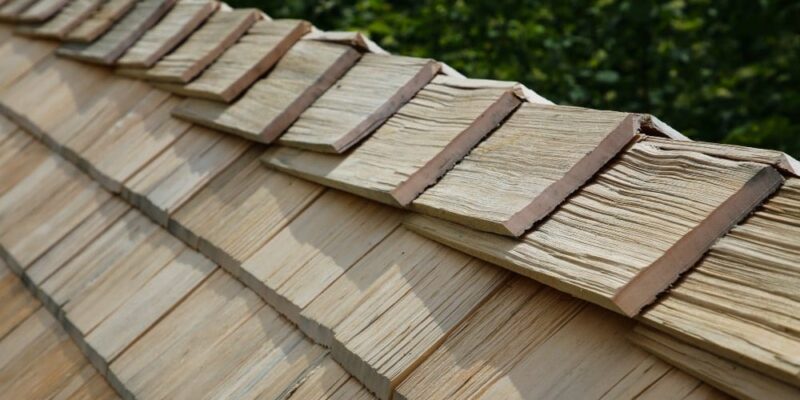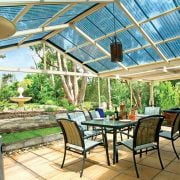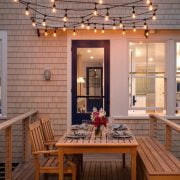Installing a wooden roof is an elegant solution for your home’s roofing problems. It’s a traditional roofing option since some of the first shingles were wood-made. In fact, they were made out of the same types of wood that modern wooden roofing materials are made of.
Still, some people find the idea of a wooden roof unsettling. Wood doesn’t have the best track record in wet climates. Also, isn’t wood flammable? Finally, wooden roofing can be expensive (depending on the type). So, why would anyone ever pick a wooden roof?
There are many advantages to the wooden roof, even aside from its appealing visual properties. To answer this question better, here’s what you need to know before choosing a wooden roof.
The only way to get an authentic rustic look
The first thing to remember is that a wooden roof is the only way to get an authentic rustic look. A similar effect can be achieved with clay shingles; however, wood is still the top choice for the woodlands lodging (cabin in the woods) style.
Whenever you look at a certain architecture, just ask yourself: Why did it deliver in this particular way? For instance, a flat roof is common in the Middle East, while in the Alps, you’ll see some of the steepest slopes ever. Why are the slopes on all the roofs in this area made in such a manner, even before there were online trends?
Bear in mind, nonetheless, that this is not a smart choice in every single scenario. For instance, while a wood shingle roof can last as much as 60 years in dry areas, in areas with a rainier climate, it might not outlast 20 years.
This doesn’t mean that wood is not a great construction (or roofing material). Borgund Stave Church was made in Norway in the 1200s, and it’s still standing.
Different types of wood are used for roofing
A wood roof is an umbrella term. The truth is that there are many different types of wooden roofing materials out there, and the type of wood that they come from determines their properties.
- Pine: One of this list’s most commonly used and the least expensive options. Pine is a great choice for those who want to cover their home but don’t want to spend a fortune. The problem is that it won’t last as long and will require more maintenance.
- Cedar: Many people choose cedar roofing for its durability and reddish-brown color. The thing is that cedar is a bit more expensive, but when it comes to resistance to insects, moisture, and decay, there’s no other wooden material that can measure up.
- Redwood: Redwood is durable, beautiful, and requires low maintenance. In other words, it has every trait of a perfect roofing material. One more thing, the majority of industrial redwood comes from responsibly managed forests. This makes it one of the eco-friendliest options out there.
The list is far from complete. You can also go for spruce, cypress, and many other options. This is a huge choice, and the differences are massive.
It comes in shingles, shakes, and panels
There are many different methods to install a wooden roof. However, there are three common ones:
- Shingles: The oldest and most commonly used roofing methods. Shingles are thin flat pieces of wood installed in an overlapping fashion. This way, they form a slate and keep each other fixated on their own weight. This makes them ideal for steeply pitched roofs.
- Shakes: These are used for homes where you want a more rustic look. They are rougher than shingles. Unlike shingles that are serially produced, shakes are often hand-split. This gives them a more natural look. Another thing that separates them is that they’re usually somewhat thicker. The installation process is similar to that of shingles.
- Panels: Panels are the largest of the three. They’re big sheets of wood installed in overlapping rows. They’re the most simplistic of the three, which makes them the easiest to install.
To make the long story short, the biggest difference is the installation process and the size of individual units. A single wood shingle is the smallest of the three. A single shake is larger than a shingle but considerably smaller than a panel.
Fire risk and extra insurance
The last thing to remember is that wooden roofs pose an extra fire risk. This means that you need to take extra precautions when opting for a home with wooden roofing.
The first thing you need to do is look for a more fire-resistant wood. Cedar and redwood are two types that are deemed more fire-resistant.
This is also something to worry about in the process of installation. With a fire-resistant underlayment, you can make the roof even more fireproof. This is one of the reasons why you want to find a professional roofing crew.
Clutter, especially one caused by debris like branches and leaves, can be problematic. This is a common-sense tip – more stuff to catch fire. So, gutter maintenance may make a huge difference in your overall safety.
Making decent vents will drastically improve the safety of your roof. They are often the path through which the fire accesses the roof, which is why fire-resistant vents may prevent your roof from ever catching fire.
Also, remember that the increased fire risk also means increased fire insurance. This is why, when choosing your insurance, you’ll need special fire coverage.
Wrap up
At the end of the day, wood is incredibly aesthetic. If you aim for a vintage or rustic look in your home, you cannot go wrong with wood. While many people talk about wood as a material with a short duration, the truth is that some structures with wooden roofs have outlasted centuries. It’s all about the maintenance and the climate that you’re in.
Also, not every type of wood is the same. So, make sure to do your research (and consult your budget) before proceeding. Finally, while the fire risk isn’t too great, you should never ignore it when installing a wooden roof. Always take necessary steps of precaution.














Comments